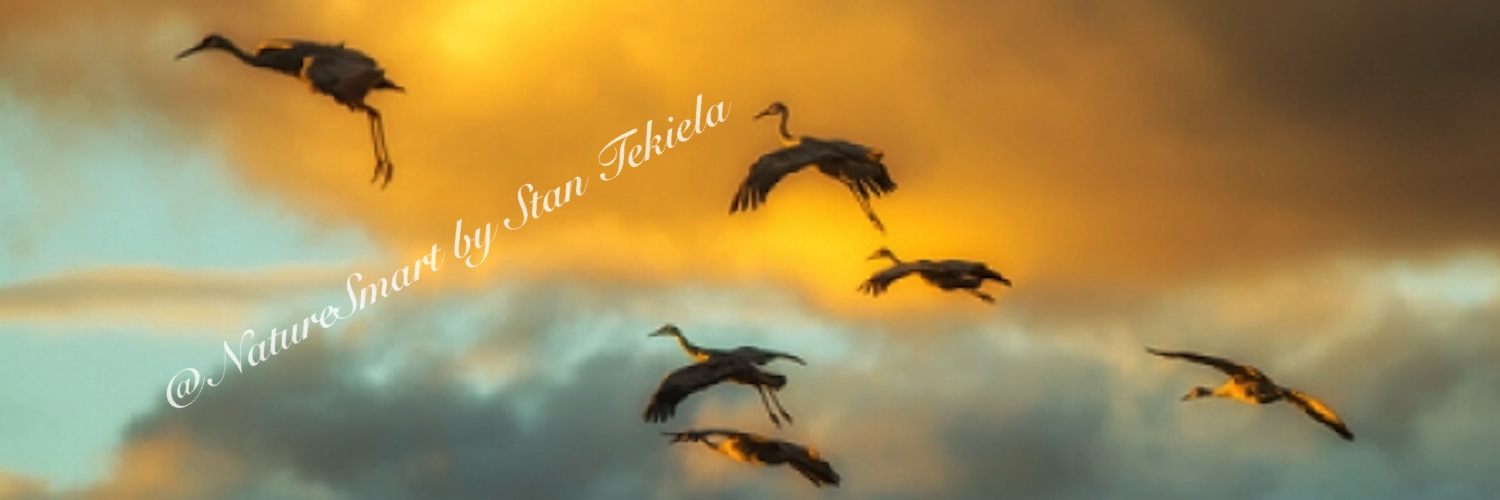
Bug-Eating Woodpeckers
In this week’s column, Stan Tekiela talks to us about the woodpecker’s love for bugs. Stan is the author of Remarkable Woodpeckers: Incredible Images and Characteristics.
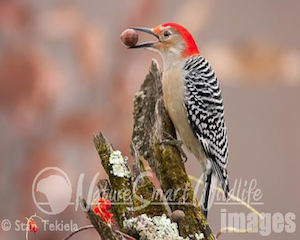 Perched nearly 20 feet in the air, looking down at the forest floor below, I was waiting for a pair of Red-bellied Woodpeckers to return to their nest cavity to feed their babies. I love these moments. Sitting in my modified tree stand high up in a tree, I’ve been here long enough to completely blend into the forest. A hummingbird flies up to my face to check me out. Shortly after that, I watch a female Wood Duck flying through the dense forest canopy at high speed. How she doesn’t run into a branch is beyond me.
Perched nearly 20 feet in the air, looking down at the forest floor below, I was waiting for a pair of Red-bellied Woodpeckers to return to their nest cavity to feed their babies. I love these moments. Sitting in my modified tree stand high up in a tree, I’ve been here long enough to completely blend into the forest. A hummingbird flies up to my face to check me out. Shortly after that, I watch a female Wood Duck flying through the dense forest canopy at high speed. How she doesn’t run into a branch is beyond me.
Hour after hour, I watch and photograph a pair of Red-bellied Woodpeckers coming and going from their nest as they feed their newly hatched babies. Watching the birds coming and going with their beaks stuffed full of everything from caterpillars to beetles, it got me thinking about just how many insects these birds consume.
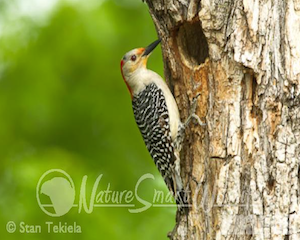 So I started a little informal study to track the number of visits to the nest per hour and approximately how many insects they were carrying. Because the number of insects packed into their beaks was too hard to judge while taking the pictures, I figured I would use the images I took to “freeze frame” the action and then count them once back at my office computer.
So I started a little informal study to track the number of visits to the nest per hour and approximately how many insects they were carrying. Because the number of insects packed into their beaks was too hard to judge while taking the pictures, I figured I would use the images I took to “freeze frame” the action and then count them once back at my office computer.
So I started to keep track of how many times both the male and female visited the nest per hour. Early in the morning when insects were not as plentiful, they would visit the nest cavity about 7 to 8 times per hour. Later in the morning, when temperatures rose, the amount of visits increased to 13 to 15 times per hour.
At some times of the day, the parents would take a break and feed themselves and stay away from the nest, visiting only once or twice. But at other times the parents would visit about 20 to 21 times per hour.
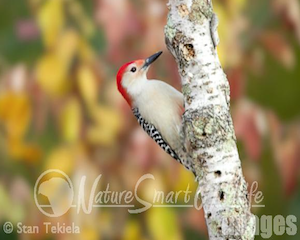 Now, the amount of daylight in the month of June is high, on average just over 15 hours between sunrise and sunset. This is not counting the twilight before and after the sunrise and sunset, which could easily add another hour of light. But let’s just count the time of actual daylight, 15 hours.
Now, the amount of daylight in the month of June is high, on average just over 15 hours between sunrise and sunset. This is not counting the twilight before and after the sunrise and sunset, which could easily add another hour of light. But let’s just count the time of actual daylight, 15 hours.
I calculated the average number of trips per hour, which came out to around 14 trips to the nest per hour. So with 14 trips per hour and 15 hours of daylight per day, each parent visited the nest 210 times. That means (with two parents), that is 420 visits to the next per day.
Back in my office, I started to look closely at all the images and began counting how many insects were being carried in each visit. While I couldn’t always determine exactly how many insects, I did my best. Some visits had only three insects that I could see. Others were as high as seven insects, such as small green caterpillars. So on average they were carrying about five insects per visit.
With one parent visiting 210 times per day, each time carrying five insects (on average), that means that one parent gathered 1,050 insects per day. Combined with the second parent, more than 2,000 insects per day were brought to their babies. That is more than 14,000 insects per week or 420,000 insects per month just by one pair of woodpeckers.
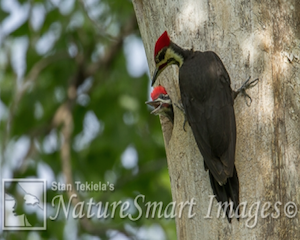 This is not counting how many insects the parents are eating while they are working to gather the food to feed their chicks. Now consider how many birds are out there right now feeding their babies. The US Fish and Wildlife Service estimates that a minimum of 10 billion birds breed in the United States each year. That is just the adult birds, not the juveniles. Not all eat insects, but you get the point: There are a lot of birds. These birds are eating an astronomical amount of insects. Now, I want you to do one thing: Try to imagine a world without birds. Until next time…
This is not counting how many insects the parents are eating while they are working to gather the food to feed their chicks. Now consider how many birds are out there right now feeding their babies. The US Fish and Wildlife Service estimates that a minimum of 10 billion birds breed in the United States each year. That is just the adult birds, not the juveniles. Not all eat insects, but you get the point: There are a lot of birds. These birds are eating an astronomical amount of insects. Now, I want you to do one thing: Try to imagine a world without birds. Until next time…
If you enjoyed Stan’s post, you may consider one of his amazing nature books: Majestic Eagles; The Lives of Wolves, Coyotes, and Foxes; or Backyard Birds: Welcomed Guests at our Gardens and Feeders. Young readers will delight in his award-winning children’s books, such as Whose Butt?, Critter Litter, and his latest, Jump, Little Wood Ducks.
You can follow Stan on Facebook and Twitter, or contact him via his web page. Stan’s nationally syndicated NatureSmart Column appears in more than 25 cities spanning 5 states (Minnesota, Wisconsin, Michigan, Illinois, and Pennsylvania) and is circulated to more than 750,000 readers. Stan’s author page on Amazon features some amazing videos! Check them out, and follow him for updates.
For more stories about wildlife and nature, sign up for our newsletter now!
More posts from Stan:
Indigo Bunting—A Familiar Summer Visitor
The Nesting Behaviors of Sandhill Cranes
Big Birds, Baby Birds, Birds Everywhere
Stan Tekiela observes Marsh Wrens
The Magical, Mystical World of Sandhill Cranes


